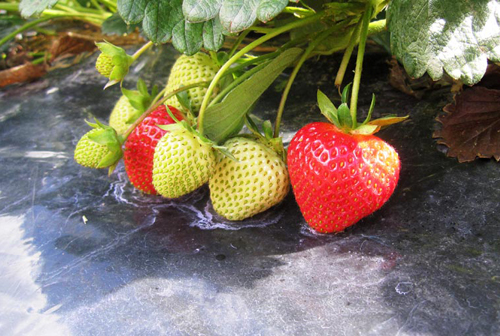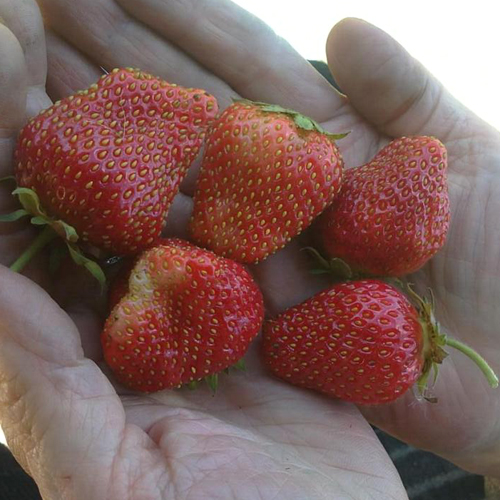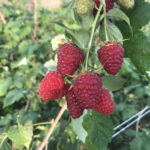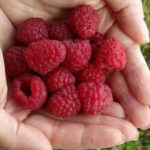Strawberry variety Everest
Everest is a remontant variety of garden strawberries (strawberries) for universal use. It was bred in France back in the 1980s. It is appreciated for good yield, excellent taste of berries, relative simplicity in care and undemanding to soils. Suitable for growing both in open and protected ground, in greenhouses and hotbeds, suitable for cultivation in the ampelous version. The species has the official name Mount Everest, sometimes it is also called Mont Everest.

The plant is powerful, but squat, spreading, abundantly leafy, rather compact. The formation is poor, in the first year after planting it is slightly better. The leaves are large, dark green in color with a bluish waxy bloom. The flowers are bisexual, white. Peduncles are tall, hold the berries well, however, under the weight of ripe fruits, they are laid on the ground. A remontant variety, actively bears fruit on unrooted outlets of the current year.
The berries at Everest are of medium size, regular conical shape. The skin is bright red, shiny. Achenes are yellow, superficially located. The pulp is red, firm, but not firm, juicy, aromatic. The taste is very good, the berries are sweet with appropriate sourness. Strawberry fruits are universal in use, are equally good both fresh and processed, suitable for freezing, perfectly decorate desserts. Due to their dense pulp, they can easily tolerate transportation, so Everest is very suitable for growing in order to sell fresh produce to the market, but it is rarely used on a commercial scale today.

The average weight of berries is up to 20 grams, in the first wave of fruiting, specimens of slightly larger ones can be observed. The variety bears fruit twice a season, in June-July and in August-September, but not in all regions it manages to give up the entire harvest due to the onset of persistent cold weather. In addition, gardeners noted that in autumn the taste of berries deteriorates significantly, they become too sour. Our hero's yield is average, about 650-950 grams of fruit per bush.
Strawberries are relatively disease and pest resistant. According to gardeners, plants are very often affected by diseases and require regular high-quality treatments. The winter hardiness of the variety is average, in the Central zone of Russia it needs shelter, and in cooler areas its cultivation can already be called risky. Drought resistance, in principle, is not bad, however, dry periods have an extremely negative effect on yields, so you should still ensure the plantings with regular sufficient watering.
In agricultural technology, Everest is very simple, it requires only the most basic care measures, but they must be carried out efficiently and on time. Of the nuances, all two points should be highlighted. Firstly, special attention should be paid to watering, feeding and preventive treatments. Secondly, do not forget to rejuvenate the plantation in time so that strawberries continue to delight you with large berries in large quantities.
Everest is a pretty good remontant variety, which over the years of its existence has managed to receive many flattering reviews. But a large number of gardeners abandoned it. Indeed, he loses in many respects to popular modern remontants, and his taste qualities are not so special as to forgive him for his shortcomings. In a word, this strawberry, of course, will not disappoint you, but currently there are many more interesting and more productive varieties on the market.









I have had Strawberry Everest for a very long time. I don't even remember how I came to my site. And everything that is written about her in the article is true. Strawberries are really nondescript, compared to the new varieties that have appeared on the gardening market. The berries are small, the taste is normal. Such berries are not bought at the bazaar. But this is if you sell it in the spring or early summer, when the counters are heaped with strawberries. But in the fall, it is selling very well. Beautiful, ruby-red fruits, although rather small, look very appetizing among the abundance of fruits. They are also extraordinarily fragrant. And this is the first plus that I want to write down in favor of this variety. The second is his extraordinary endurance. The berry in the rainy season almost does not give in to rot, and in drought the plant, although it does not bear fruit abundantly, does not wither. In addition, it does not need to be updated as often as other varieties, because it itself does an excellent job with this, throwing away the mustache with young shoots, and some immediately begin to bloom. And I take advantage of this by planting shaded places in the garden with strawberries so that I can just go and harvest in the fall.
Of course, Everest is "not for everybody", because not everyone will agree to grow it in order to enjoy a fragrant delicacy in the fall. But I like it and the fresh berries on my table - until the first frost. I even got the idea to try growing this plant on a windowsill as it doesn't require much attention.